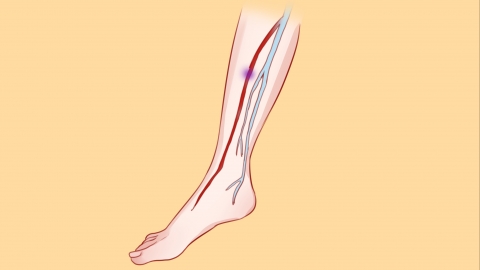What are the treatment methods for lower extremity arterial occlusion?
Generally, the treatment methods for lower extremity arterial occlusion include conservative management, medication, interventional therapy, surgical treatment, and traditional Chinese medicine (TCM). Specific details are as follows:
1. Conservative Management
Patients should quit smoking and limit alcohol consumption to avoid harmful substances in tobacco that can worsen vascular damage. It is important to control blood pressure, blood glucose, and lipid levels to reduce the risk of vascular disease. Moderate walking exercises—such as 20–30 minutes per session—can help promote collateral circulation. Keeping the lower limbs warm is essential to prevent cold-induced vasospasm. Additionally, wearing tight clothing should be avoided to ensure proper blood flow in the lower extremities.

2. Medication
Drug therapy helps relieve symptoms and slow disease progression. Under medical guidance, patients may take enteric-coated aspirin or clopidogrel to inhibit platelet aggregation and prevent thrombosis. Cilostazol tablets or alprostadil injection can be used to dilate blood vessels and improve blood supply to the lower limbs. For those with abnormal lipid levels, atorvastatin calcium or rosuvastatin calcium tablets may be prescribed to regulate lipids and stabilize atherosclerotic plaques.
3. Interventional Therapy
Interventional therapy is suitable for patients with severe vascular stenosis or occlusion. The commonly used method is percutaneous transluminal angioplasty combined with stent implantation. A catheter carrying a balloon is advanced to the affected site to dilate the narrowed vessel, followed by stent placement to support the vessel wall and restore normal blood flow. This approach is minimally invasive and allows for rapid recovery. Patients must continue taking antiplatelet medications as prescribed after the procedure.
4. Surgical Treatment
If interventional therapy is ineffective or the lesion involves a large area, surgical intervention may be required. The most common procedure is arterial bypass grafting, in which a patient’s own vein or a synthetic graft is used to create a "bridge" between the two ends of the blocked artery to restore blood flow to the lower limb. In cases of severe limb ischemia that cannot be improved by other means, amputation may be necessary to prevent the spread of infection.
5. Traditional Chinese Medicine (TCM)
According to TCM, lower extremity arterial occlusion is associated with blood stasis in the meridians and cold congealing with qi stagnation. Treatment focuses on promoting blood circulation, removing blood stasis, warming the channels, and unblocking meridians. Under medical supervision, patients may take herbal medicines such as Xuesaitong tablets or Compound Danshen Dripping Pills to improve circulation. Acupuncture may also be used, targeting acupoints such as Zusanli (ST36) and Yanglingquan (GB34), to regulate qi and blood flow and alleviate symptoms like leg pain and numbness.
In addition, during treatment, patients should undergo regular follow-up examinations including lower limb vascular ultrasound as directed by their physician to monitor disease progression. If symptoms such as increased leg pain, decreased skin temperature, or changes in skin color occur, prompt medical attention is needed to adjust the treatment plan.





